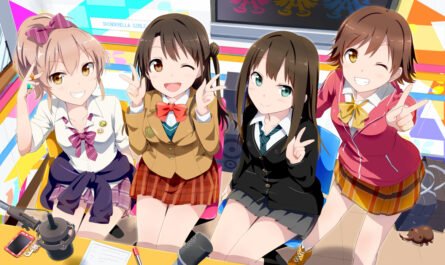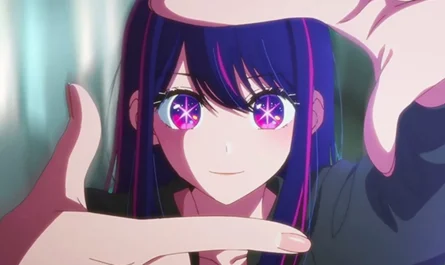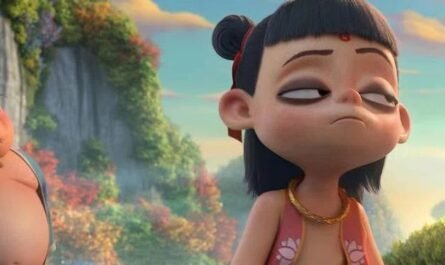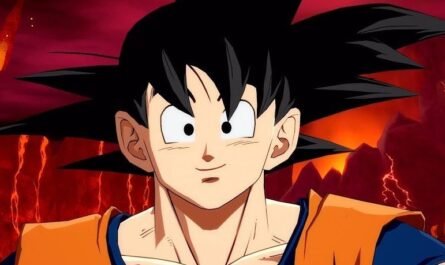It has been about a month since it was announced that the seventh part of “JoJo’s Bizarre Adventure” will be animated as “Steel Ball Run JoJo’s Bizarre Adventure.”
Surprisingly, this announcement only revealed the image visual and the teaser video, and not only the staff and cast but even the broadcast date have not been announced. “Steel Ball Run” (hereinafter “SBR”), which began serialization in 2004 and ended in 2011, is a work from 14 years ago. However, it has once again become known that it is one of Hirohiko Araki’s works that still has a lot of fans who are really into it and have tremendous support.
The announcement was made at the end of the fan event “JOJODAY STAGE” for the anime “JoJo’s Bizarre Adventure” series. Combined with the fact that it was previously billed as a “fan event that connects the past and the future,” most fans were probably looking forward to “SBR,” and I was one of them.
I witnessed that moment on the live stream, and as the cast mentioned in the after-talk, I could feel the participants’ indescribable “expectations” filling the venue. The “JoJo Caravan,” which started the day after the anime adaptation was announced, visualized these expectations.
The anime adaptation decision commemoration project began in Shibuya, Tokyo, which conveys the charm of “SBR” by exhibiting reproductions of the original drawings. The Kyoto exhibition just finished the other day. The counting method of “1st STAGE” and “2nd STAGE” is likened to the “Steel Ball Run” race in the original work.
I was lucky enough to get a ticket to the Shibuya venue, so I went there. While I was excited by Araki’s instructions to his assistants written in blue pencil, I feel that parts of “SBR” are also linked to the currently serialized 9th part, “The JOJOLands.”
These are the two elements of “land” and “gold.” Araki states the following in the author’s comments for the first and second volumes of “SBR.” “SBR is essentially drawn as Part 7 of JoJo’s Bizarre Adventure, but I didn’t want to emphasize that for readers starting from here for the first time.
On the other hand, it was also a bad attitude for manga artists to bury their past works and create new ones. The theme of a job must be a continuation of the past.” (From the author’s comments in Volume 1 of SBR) “Just as the seasons change, or people go through life, the theme of a work should be an extension of the past. It shouldn’t be a break from the past.
There are characters in SBR with names similar to those in JoJo’s Bizarre Adventure, but please think of them as their ancestors or a parallel world. The theme is the same: a hymn to humanity. How will the characters push through this strange race called life!?” (From the author’s comments in Volume 2 of “SBR”) As mentioned above, Araki’s way of thinking has been inherited by the JoJo series since “SBR,” and as Araki has stated, for example, the protagonist of “SBR,” Johnny Joestar, his partner Gyro Zeppeli, and his fateful opponent Diego Brando, are reminiscent of the characters from Part 1, “Phantom Blood.” Johnny’s real name is Jonathan Joestar. The white rat he secretly kept as a pet was named Danny, and he is depicted as a character who is conscious of Jonathan Joestar, the protagonist of Part 1. However, they are similar but not the same characters, and what is symbolic is their will.
From Jonathan in Part 1 to Jolyne Kujo in Part 6, “Stone Ocean,” the bloodline and “golden spirit” passed down through the Joestar family. The “golden spirit” shown by Joseph Joestar in Part 4, “Diamond is Unbreakable,” is the radiance of “justice” that flows through Josuke Higashikata, who lives in Morioh Town, the setting of Part 4, and Rohan Kishibe.
A good example is the protagonist Giorno Giovanna, who shouts, “Determination is!! In the dark wilderness!! It is carving out a path to follow!!” and faces adversity in Part 5, “Golden Wind.” On the other hand, Johnny in “SBR” is depicted in the work as possessing a “jet black will.”
This is shown in the battle with Ringo Lordagain, who appears in volumes 7 and 8 of “SBR,” and is the idea that the noble “hunger” that Johnny mentioned will elevate his immature self as a person to a sacred realm. Johnny, who is paralyzed from the waist down and cannot move, has something to overcome. “SBR” is the story of Johnny’s rebirth as he begins to walk.
The themes of “SBR” include “the right path” and “satisfaction,” as well as “good and evil.” Ringo is a villain, but he surely has an unwavering sense of justice within him. He is a person who has no doubts about his will and can act without hesitation. For example, he is like Prosciutto, who appears in Part 5. Just as the “final boss” in “SBR” flaunts his “justice,” “SBR” once again makes us keenly aware of the awesomeness that attracts people who transcend good and evil.
The Ringo fight is among the most famous battles in “SBR” and the “JoJo” series. It is a turning point in every way that awakens Araki’s drawing skills. Expressing a horse race in animation is undoubtedly a “tough road” in the first place, but how the drawings after the Ringo fight will be depicted is also a point of interest in this animation.
What was fascinating about watching “JOJODAY STAGE” was that when the cast looked back on their encounters with “JoJo,” most started reading from the first part, starting from the middle part. I am no exception, and I picked up “Weekly Shonen Jump” when the serialization of Part 6 started and then moved on to Part 1. I’m sure the “SBR” anime will inspire many new fans to pick up the anime series or the original work. It depicts the unbroken lineage and will, and the hymn to humanity.











